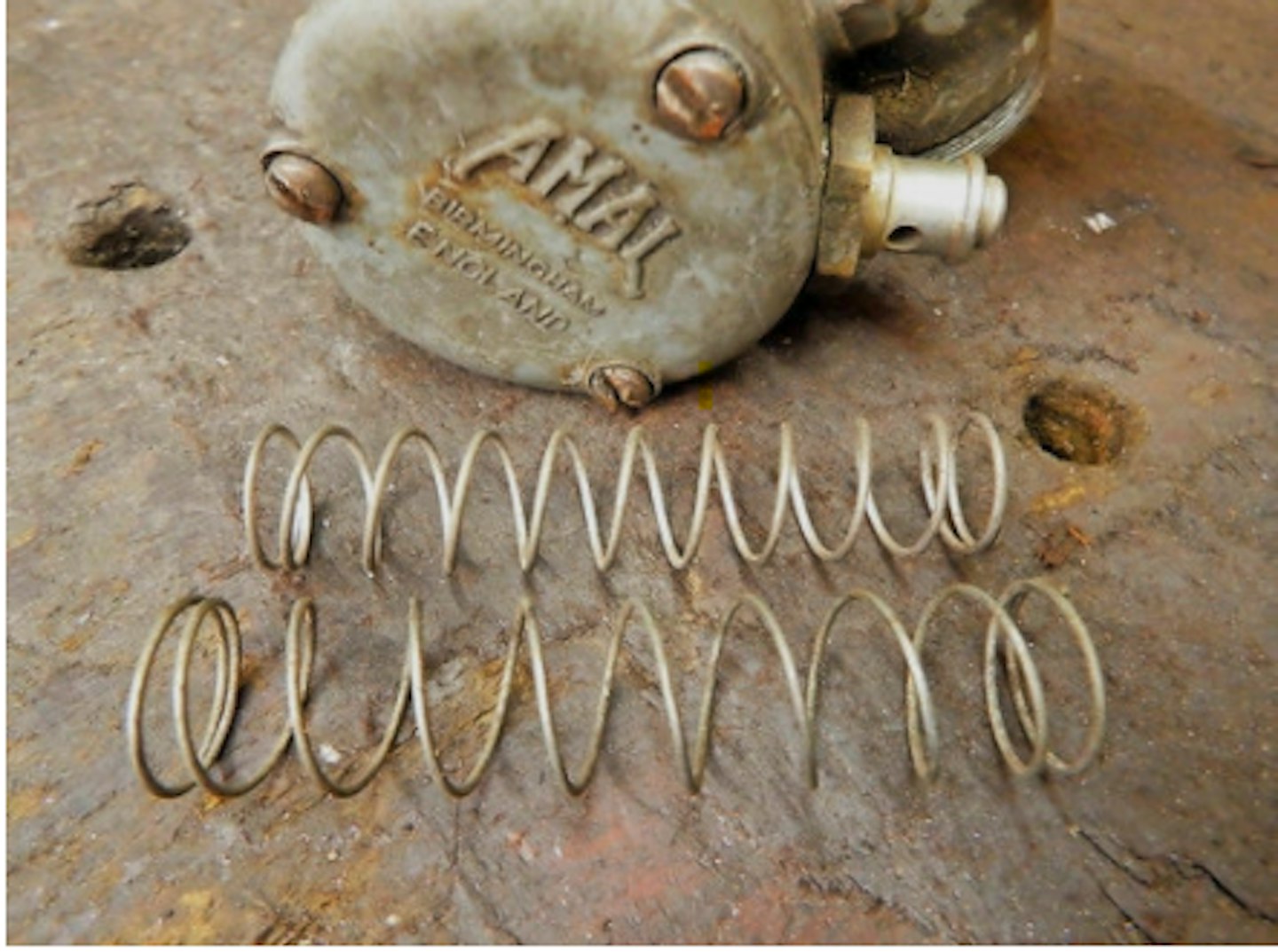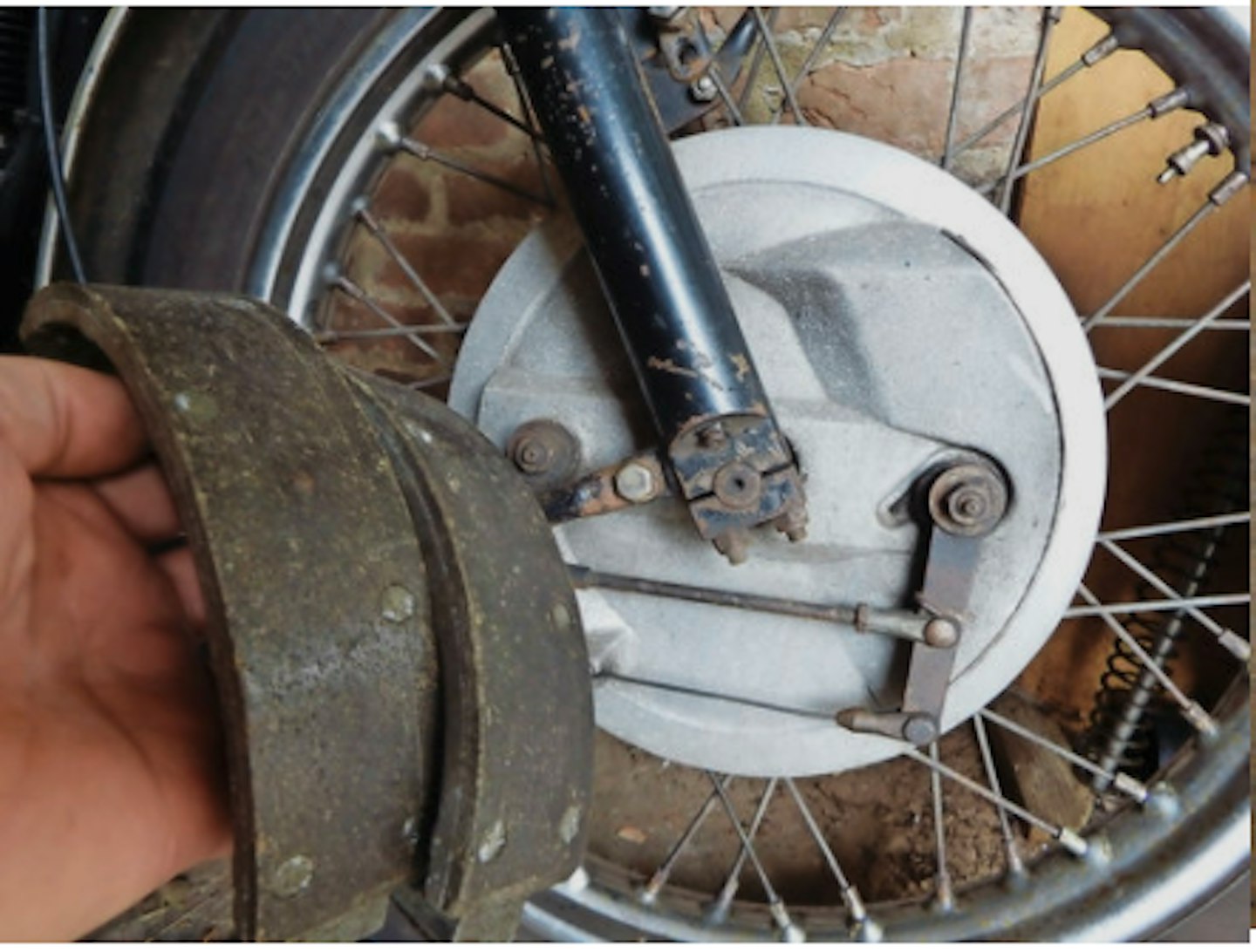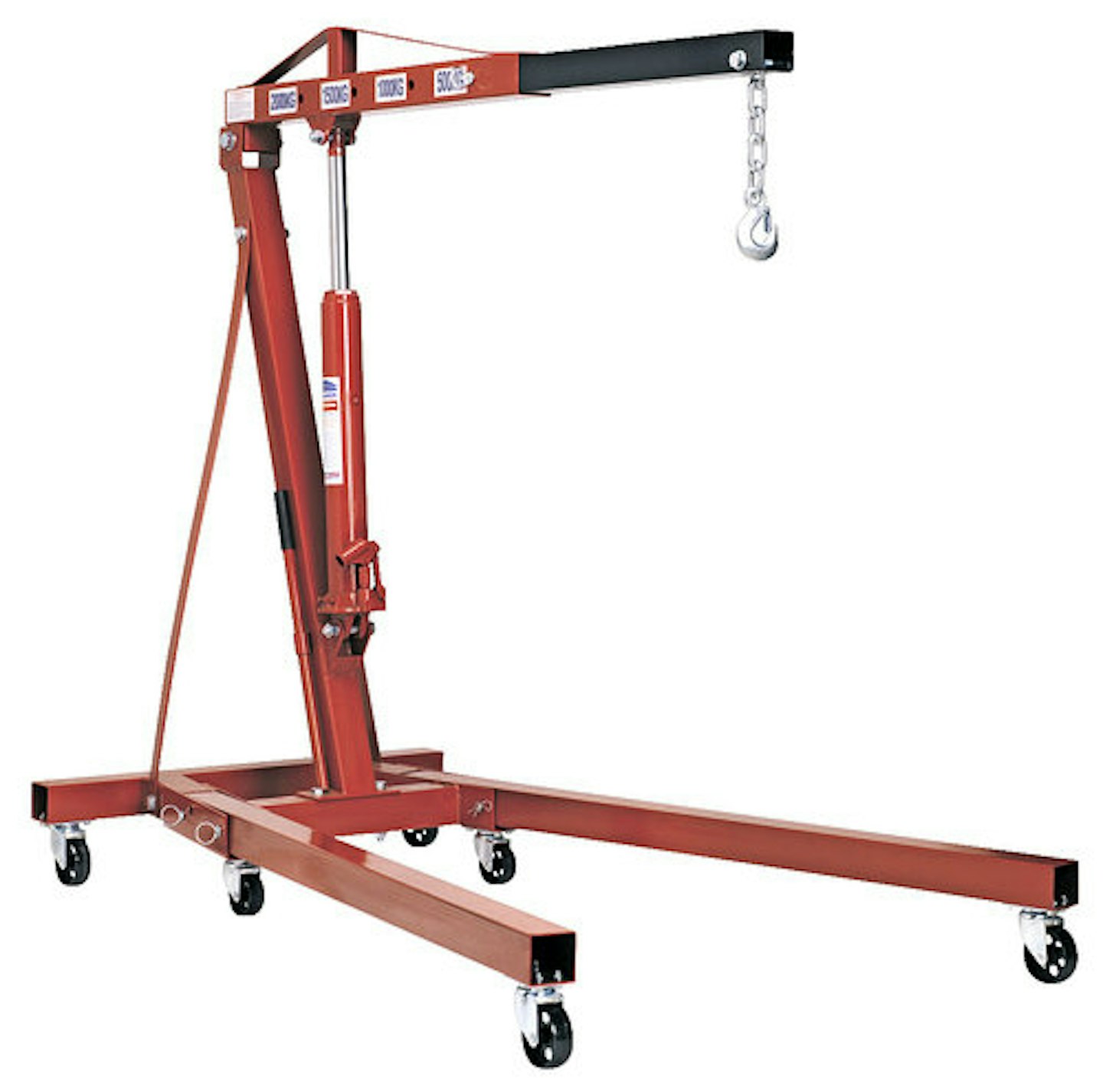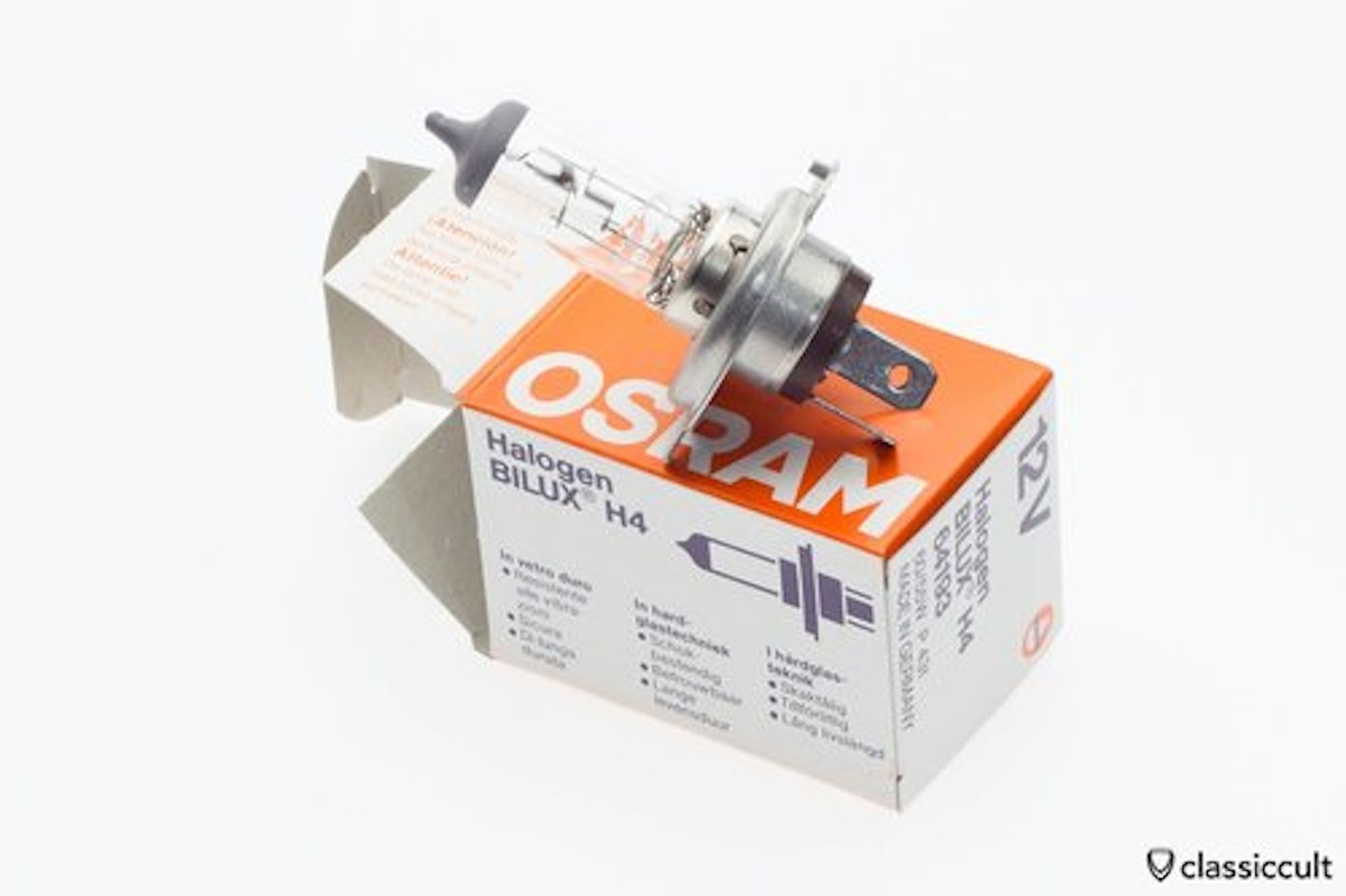A silly mistake nearly ruined my West Kent Run. Shifting the Rudge gearbox to tension the primary chain a few days before the event, I neglected to adjust the gearchange rod to compensate. A quick trip into town revealed I couldn’t get first, so I pulled away in second. The town was busy and the clutch got hot enough to make neutral selection difficult, making the clutch even hotter until the now-incandescent clutch pushrod softened and wore down, leaving me clutchless. Never mind, back home I made a new pushrod, adjusted everything and forgot about it... On the run I found I should have looked further. The clutch was dragging enough to make it stall when going into gear, and over the first ten miles the cable slackened until I had no clutch at all... again. But after taking up the adjustment, while the action felt normal it still would not release. Now I’m used to coping with a broken cable – you just paddle off and kick into gear – but I can tell you hand-change really raises the bar. You have to lock the throttle at medium revs, paddle away and slap the lever, whereupon the bike rears like a bronco and cavorts off toward the opposite kerb while you try to get your gear-hand back to the handlebar. Once we were moving, I divided my time between avoiding further halts and wondering what hadgone wrong. I could feel the clutch lifting against the springs, it just didn’t work. Why? A tea-stop strip revealed all. The dome that the pushrod bears on had come adrift, but remained in place thanks to a tin cover that seals the clutch. The ‘spring pressure’ I felt was actually this dome flexing, not the clutch springs. I finished the run OK, but suffered all that aggro just because I forgot to adjust the gear rod. Still, at least I’m not the only one making mistakes this month – you’ll find more overleaf!
THE BIG FIX
CON-FUSED
CAN FUSES CAUSE CARBURETTOR PROBLEMS?
.jpeg?auto=format&w=1440&q=80)
Like the man said, nine out of 10 carb problems are actually ignition – and a good example of this came from Dan Johnson, who contacted my website (rickparkington.co.uk) asking about his 1969 Triumph Daytona. The bike has been thoroughly gone over with new carbs, Boyer ignition, engine fully rebuilt, new wiring loom, but Dan had bother with spitting back, poor idle and cutting out at tickover. He said: ‘The bike goes really well, but if I snap the throttle shut it cuts out and always needs the carb tickled to start, except when really hot. I tried different pilot jets and slides before turning to ignition, trying a new switch and checking all connections – but it’s no better. Any ideas?’ All I could suggest was to check the float heights and try hard-wiring the Boyer straight to the battery to eliminate loom or switch trouble. Valve leaks maybe? Daytona heads can crack, but I doubt that’s it. Dan came back to say, going through the wiring again prior to hard-wiring, he took out the fuse and found that the soldered ends in the holder were pointed and sharp and had pierced one end of the fuse. After filing the points flat and fitting a new fuse, the bike ran perfectly. He says: “I can’t believe I didn’t check the fuse sooner – and I haven’t got a clue why it would cause the problem – but it’s lovely to ride now.” Well it is a strange one, Dan. The only fuse problem I recall was on my dad’s Lucas Rita equipped T120, which got very hot one day and turned out to have a blown fuse. We decided that with the battery out of circuit, the ignition was running off the alternator whose pulses were interfering with the timing, causing the overheating. Dan’s intermittent fuse contact may have been something similar.
TOP TIPS
TOO MUCH THROTTLE, TOO MUCH BRAKE

Bigger Amal Monobloccarburettors have bigger springs
Caught up with Triumph fan Bob Smith from the States at the Manx. A while back he asked me why his T120 wouldn’t pull over 70mph. He checked cam, ignition timing, jets, the lot. Then he swapped carbs with another Bonnie; although jetted the same, it ran spot on. “You won’t believe it,” he groaned, “I never thought to look down the chokes with the throttle open; when I did, my slides were only opening threequarters!” Bob had springs from a larger type 389 carb fitted; they were binding up before the throttles opened fully. That’ll do it, Bob!

Glaze on shoes or drums cancause grab. Emery is the solution
Ken Adams has solved the grab problem he had with his Triumph T120 front brake. He’d tried different shoes and filing a bevel on the leading edge, but without success. He noticed that there was a mixture of fine rusting and ‘glaze’ on the surface of the drum. After scrupulously rubbing it all away with emery paper, the problem disappeared.
BAFFLING BMW
Karl Chadwick is another victim of the Silly Season. After experiencing slight clutch slip on his BMW, he replaced the plate and diaphragm spring only to find after reassembly that he had no lift. He pulled it apart again to check that nothing was missing. Everything was in place, but there was no resistance whatsoever at the lifter and the clutch remained engaged, as though the cable was broken. My only experience with BMW gearboxes was working on the Indian Dakota Fours at Motolux in Edinburgh – I once had to dismantle one of the recon Boxer gearboxes we used after making the mistake of undoing a tiny screw on the top of the box. It looked like the ideal place to fit an earth cable, but as I undid it I heard a sickening ‘plink’ as the baffleplate thing it evidently retained dropped off into the gear cluster within. Not a fond memory... Anyway, before I had time to consult a wiser man, Karl came back to me to say he had found the problem. He’d managed to put the diaphragm spring in back to front, so there was nothing to push. Well done for spotting it before it drove you completely barmy, Karl.
GETTING YOUR OATS
David Read asks what is the best method to remove and refit a Laverda engine to the frame, being a heavy lump. If you need common sense advice about Laverdas, you need look no further than Glasgow-based specialist Keith Nairn at Laverda Scozia. So I asked Keith what was his hot tip for fitting a mighty triple engine? “How shud I ken? I use an engine hoist! I mean I have heard of people lying the engine on its side and shoogling the frame about over it, but these are the sortae folk complain that the clutch is too heavy! Ah dunno whit t’say... eat more porridge, mebbes?” Thanks Keith; very funny… but there was more: “I used to heft them in myself, but I don’t bother with that nowadays. To be honest, I’d recommend a day-hire on a hoist to do the job – it’s not usually that expensive. You need the carbs and starter motor off, and if you remove the outer covers and put the sling around the ends of the crank, you’ll find the engine actually balances quite well.” So there it is, straight from the horse’s... er, nosebag.

WHAT BATTERY?
Mark Stevens asks what is the smallest physical size of battery he can safely fit to his Honda CB250RSA. Being kickstart only, you’d imagine Mark could get away with something smaller, but I thought I’d check with Marcus at Rex’s Speedshop (01580 880768, rexs-speedshop.com). Marcus pointed out that you have to watch the impedance – the battery itself acts as a sort of charge regulator and if its capacity is too small, it is likely to overcharge and fail. This is a problem that can occur on old British bikes when a small, modern battery is fitted inside the hard-rubber shell of the original. The Honda’s original battery is a 12N9 4B1, rated at 9 amp hour and Marcus suggested that you could probably get away with a 5 amp hour such as an MB 5 or possibly an MB 3 (3AH) but that might be borderline. The trail version of the RS, the XL250RC, used a YB3LA battery which is also 3 AH but the XL may have had a lower output generator. Marcus added that another alternative is to do away with the battery altogether and fit one of his Battery Eliminator kits (priced at £18) with the downside that the supply of current depends on engine revs, so you can run into problems with things like indicators and stop lights not working properly when waiting at junctions, especially when the lights are in use.
HOW TO: RE-THREAD AMAL CARBURETTOR TOP SCREW HOLES
CURE THE EFFECTS OF OVER-ENTHUSIASTIC TIGHTENING OF CARB ALLEN SCREWS BY GOING OVERSIZE LIKE THIS...
- The problem with Allen screws in carbs is that it’s easy to overtighten them. There was barely any of the original 2BA thread left in this Concentric I am fitting to the Gold Star...

- But the good news is that 2BA is a very similar pitch to M5 x 0.5. And 5mm is a slightly larger diameter, too, so it makes a useful oversize.

- All you need to do is run the 5mm tap through the original hole and drill out the diameter of the carburettor top with a 5mm drill to clear the new screw.

- There, sorted. If you find a screw with a similar head to the original, it’s a pretty unobtrusive repair – although remember which screw goes in which hole!
BULBS GOING POP
Quality headlight bulbs may save money in the long run...
While I was talking to Marcus Rex, I had another question from Peter Hart, who seems to be getting through H4 headlamp bulbs at an alarming rate on his ’73 Kawasaki Z1 900. “The last one only lasted 100 miles,” he laments, “I know these bikes have a reputation for being heavy on headlight bulbs, but is there anything I can do about it? The bike has been rewired with a new solid-state regulator/rectifier unit and I don’t think it’s vibration because none of the other bulbs seem affected...” Marcus confirmed that older Kawasakis did have problems. “The early voltage regulators were terrible,” he says. “There was a succession of service bulletins about them and eventually they got around it by supplying an extra diode which cut down about 0.9v. Even though Peter’s has been replaced, it’s still worth checking the output with a voltmeter – if it’s putting out 15.5 or 16 volts, then that’s the problem. Also, check the earths – reducing the voltage with a high resistance will increase the current. But it could easily be due to the bulbs themselves. I recently got a box of H4s from a supplier and none lasted any time at all. I went for a genuine Osram bulb instead and that’s still going strong.” Once again, it seems ‘you gets what you pays for’, but I’d add that when I converted to a halogen headlight on my Triumph, the bulbs seemed much more fragile than the originals. H4 bulbs get much hotter and so maybe they are more vulnerable to vibration. It’s also worth making sure there’s nothing buzzing around in the headlight area – a rattly tax holder or reflector could set a frequency that blows bulbs.

